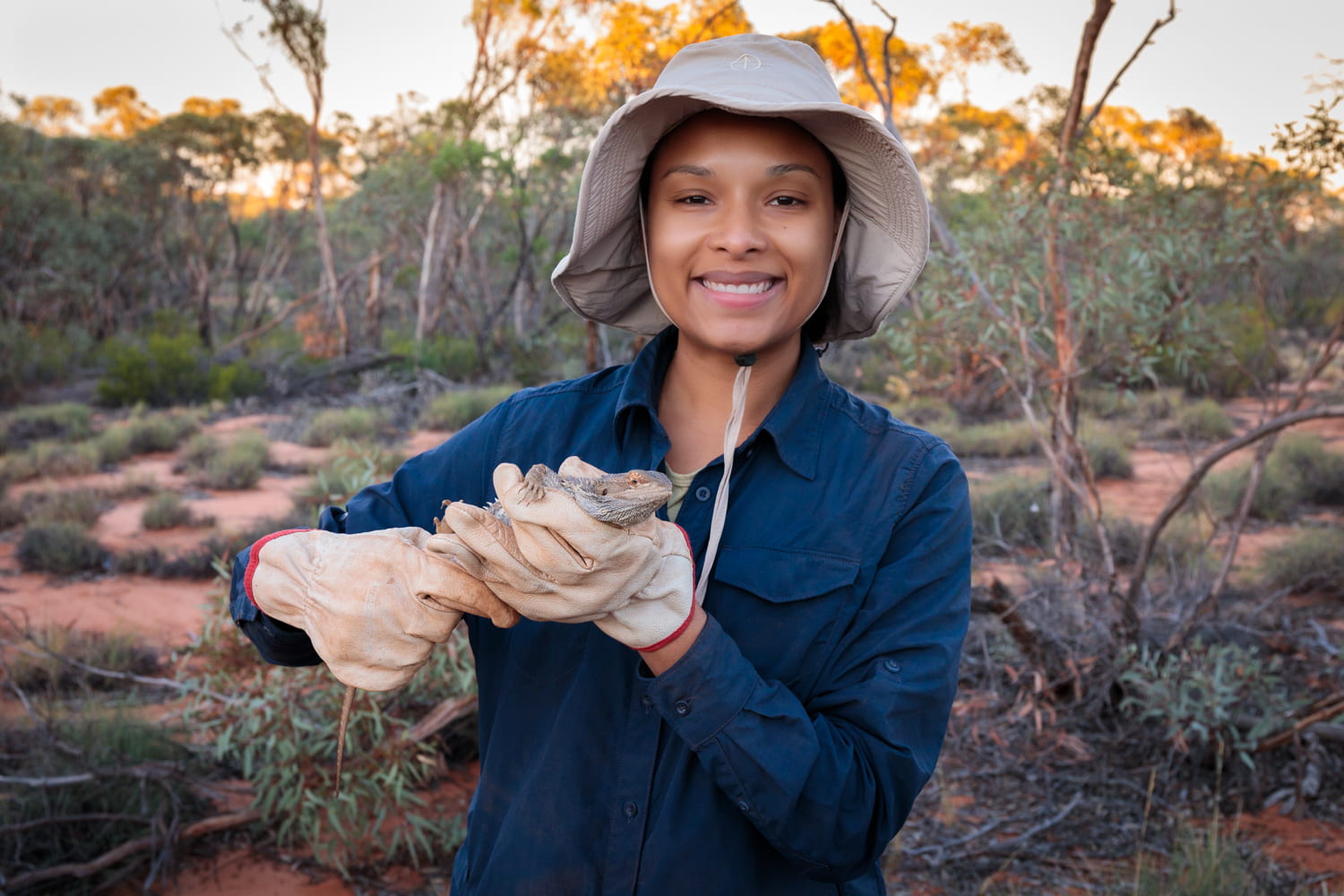
Fire-related reptile declines in the ‘land of the lizards’
Julianna Santos has a new paper on fire-driven reptile declines in Australia – published in Global Ecology and Biogeography.
Julianna and colleagues completed a systematic review to identify fire characteristics and interacting threats associated with population declines in imperiled Australian squamates.
The work was a collaboration between scientists from University of Melbourne, University of New South Wales, Department of Environment, Land, Water and Planning, Victoria, Deakin University and Monash University.
You can read the Abstract below, click this link for an open access version of the paper and email Julianna for more details.

Abstract
Background: Fire creates habitats for many animals but changes in fire activity threaten species worldwide. While conservation assessments routinely identify fire as a threat to lizards and snakes, the processes underlying fire-driven population declines have received less attention. Assessing the effects of fire on demographic processes – survival, reproduction and movement – provides a means to identify mechanisms of population declines and forecast population changes. Here, we synthesize how inappropriate fire regimes contribute to declines of animal populations,
using threatened Australian squamates as a case study.
Methods: We applied a demographic framework in a systematic review to identify fire characteristics and interacting threats associated with population declines in imperiled Australian squamates (n = 88). We reviewed primary literature and conservation assessments on these species and classified fire-related threats according to seven key mechanisms of population decline, five fire-regime characteristics, and eight interacting threats.
Results: Inappropriate fire regimes threaten 43% of Australian squamates of conservation concern, including geckos, skinks and snakes. Our analysis indicates that high fire intensity and severity, high fire frequency, and large fires are the main causes of fire-related population declines, particularly via their impacts on survival. Low fire frequency also contributes to declines of some species through reduced survival or reproductive success. Weed invasion and predation are observed or predicted to interact with fire to amplify reptile declines. Our results also reveal a dearth of robust
empirical studies on squamates of conservation concern.
Main conclusions: The demographic framework applied here will help forecast population changes in a new era of fire. By focusing on processes that are relevant to squamate populations globally, we anticipate that the framework will help diagnose causes of population declines in ecosystems that experience fire, and quantify the consequences of alternative management actions, including urgent conservation interventions after megafires.
Categories
- Uncategorised